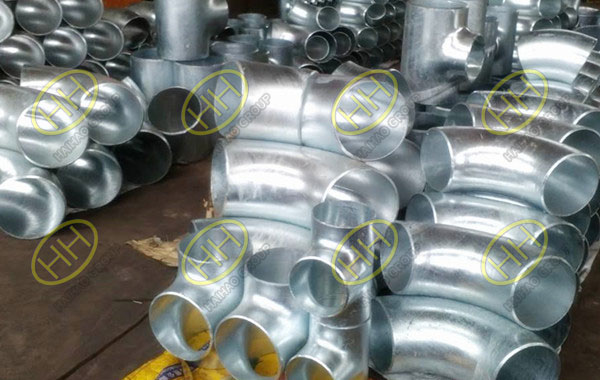The zinc plating process can vary depending on the preferences of the metal finishing company, as well as the specific zinc plating application at hand. In general, the process begins by cleaning the surface of the metal with an alkaline detergent solution to remove oil, other materials or debris. The item is then treated with an acidic solution to remove rust or surface scales.

Cold galvanized pipe fittings products finished in Haihao Group
After cleaning, the actual zinc plating process can commence. The item is immersed in an electrolyte solution containing dissolved zinc. A DC electric current is then introduced into the solution, which deposits the zinc onto the cathode — the less chemically active item, or part being plated. This procedure is known as electrodeposition. The zinc serves the role of the anode, or the more active component.
One potential issue with plating zinc is that the metal is likely to come in contact with hydrogen molecules during the plating process. This can result in a condition known as hydrogen embrittlement, where trapped hydrogen causes the metal to weaken and can lead to cracking. Baking the object after plating can diffuse the hydrogen throughout the metal, helping to minimize the risk of embrittlement.

Galvanized BS4504 plate flanges
Plating methods for applying zinc coatings include the use of rack and barrel plating processes. With rack plating, the parts are affixed to a jig during plating to hold them in place and prevent damage. Barrel zinc plating involves placing the parts inside a specially designed vessel containing the plating bath. The barrel is rotated slowly during the plating process to coat the parts.
Rack zinc plating is normally the best choice for smaller, delicate parts that cannot withstand the tumbling caused by a rotating barrel. Barrel zinc plating, on the other hand, is typically more cost effective and less labor intensive. It’s often the better option for plating many parts at once.
Haihao Group could provide you kinds of zinc plating piping goods,welcome to contact us.Email:sales@haihaogroup.com







